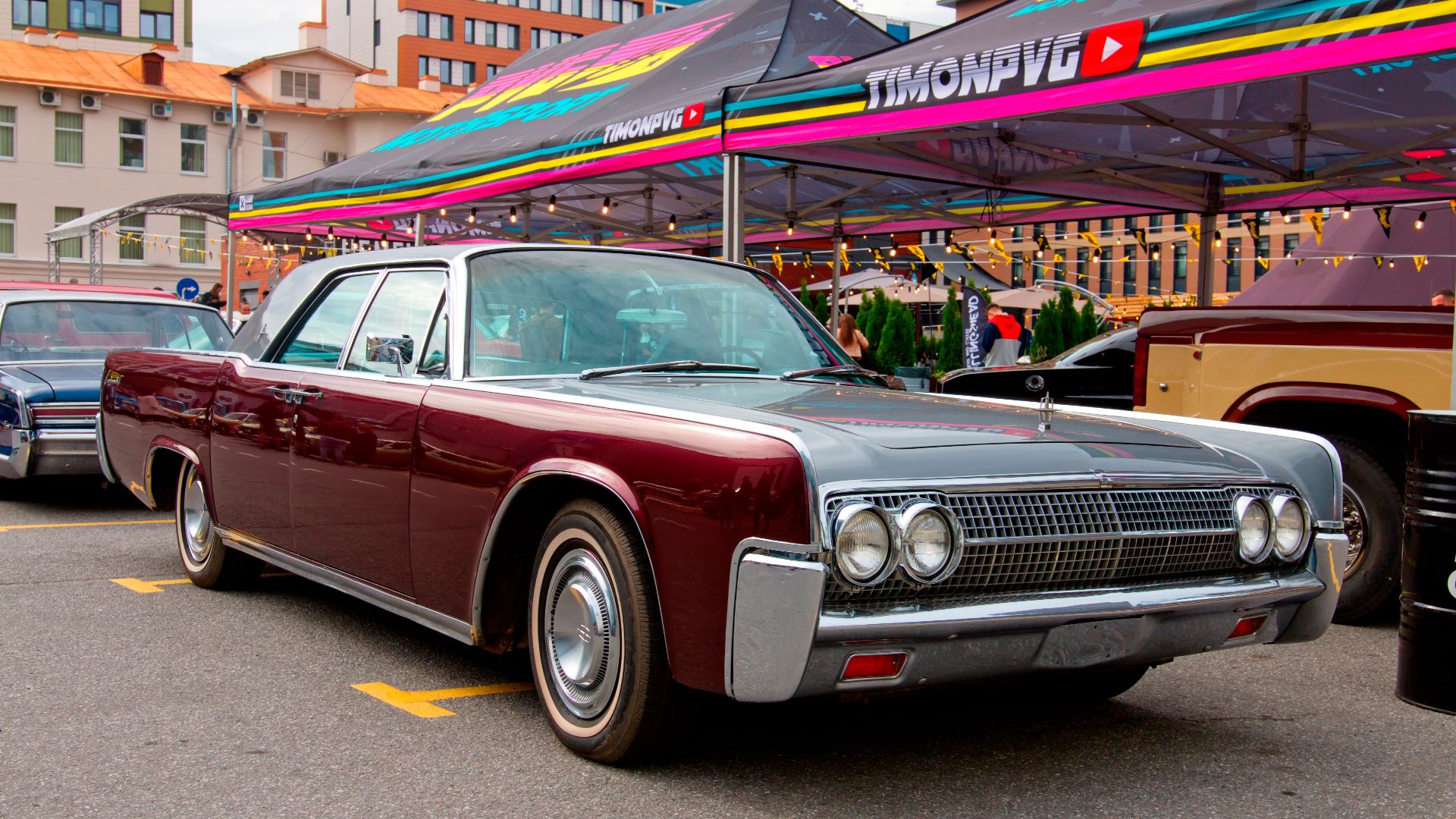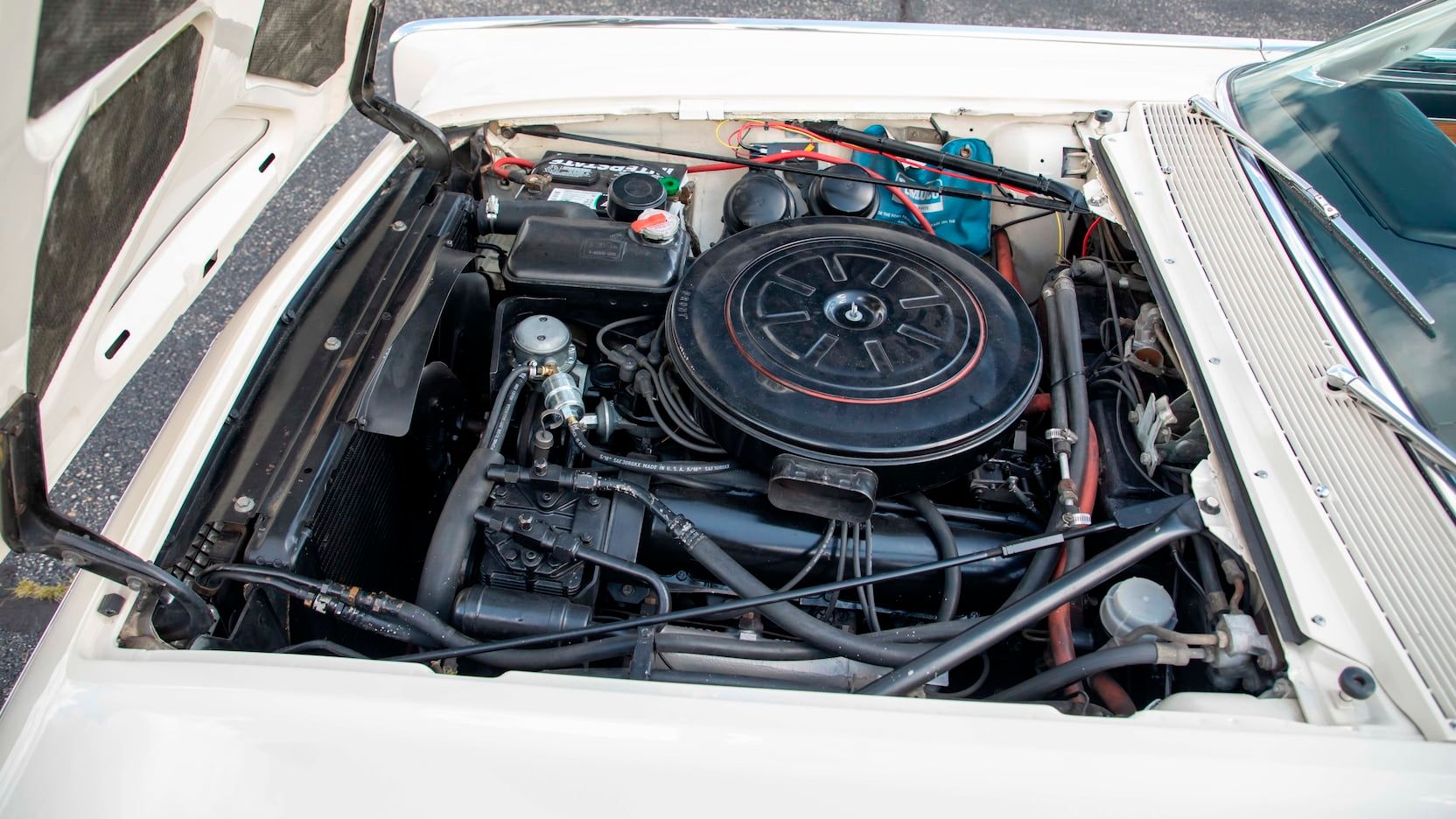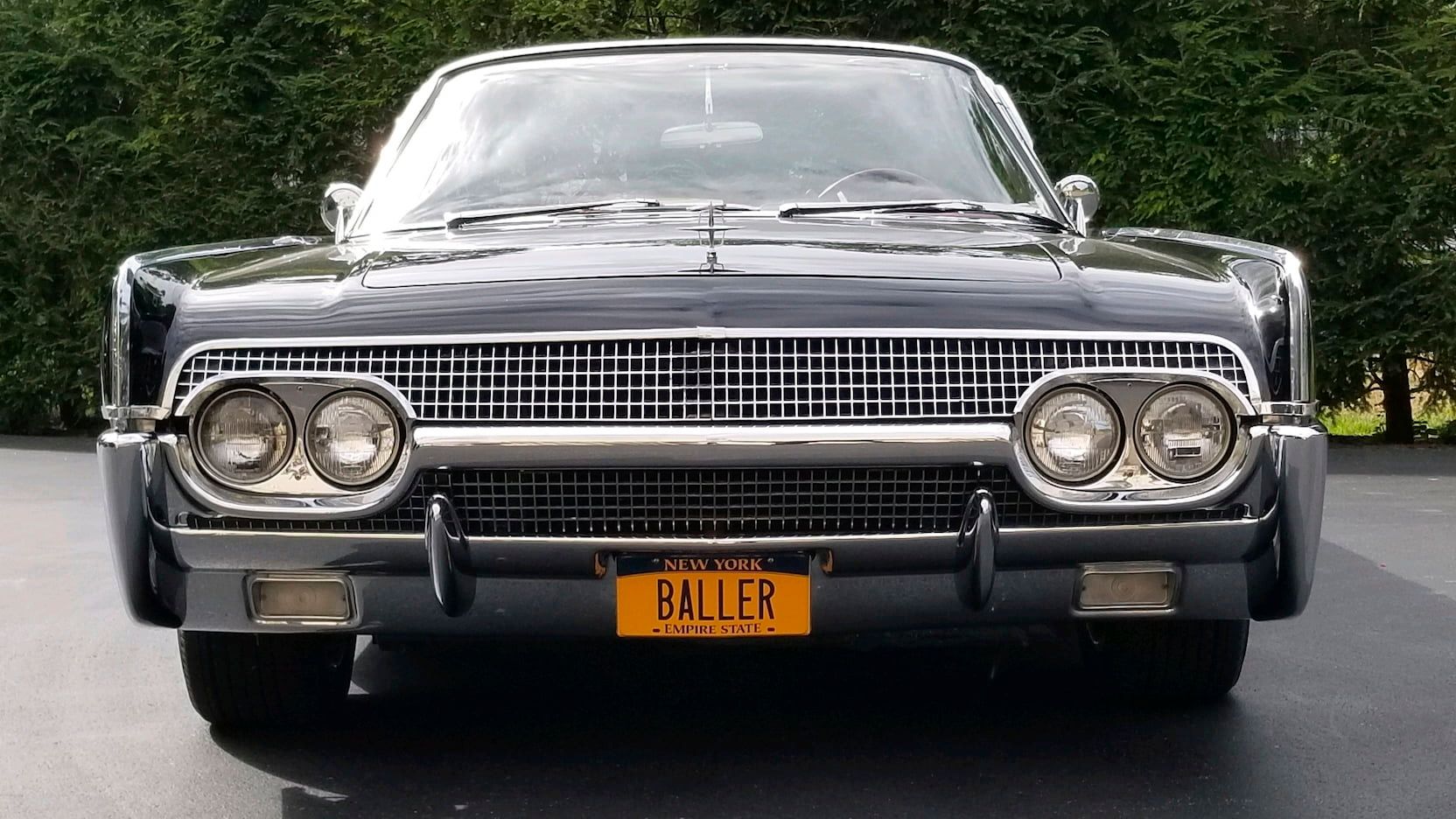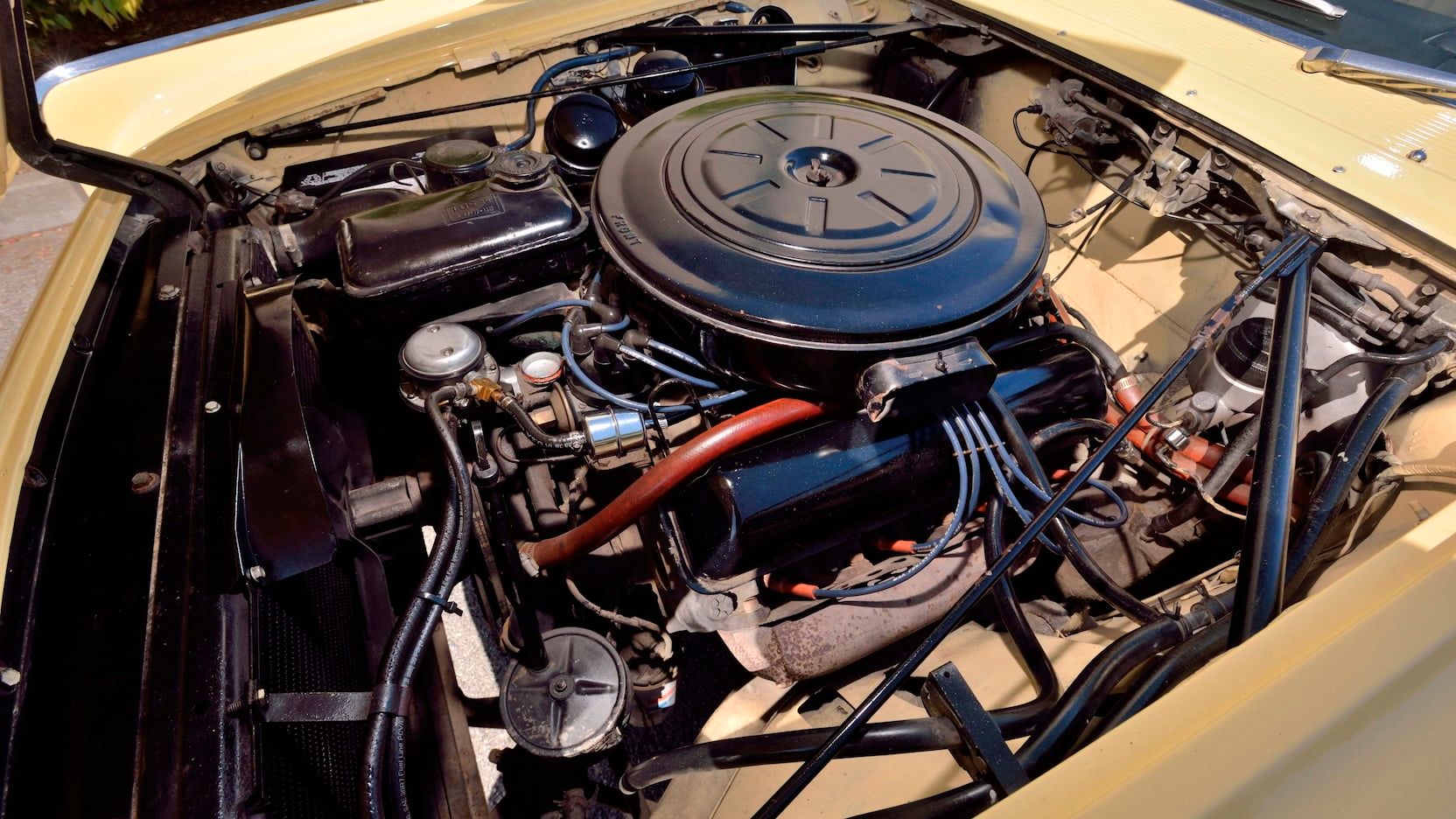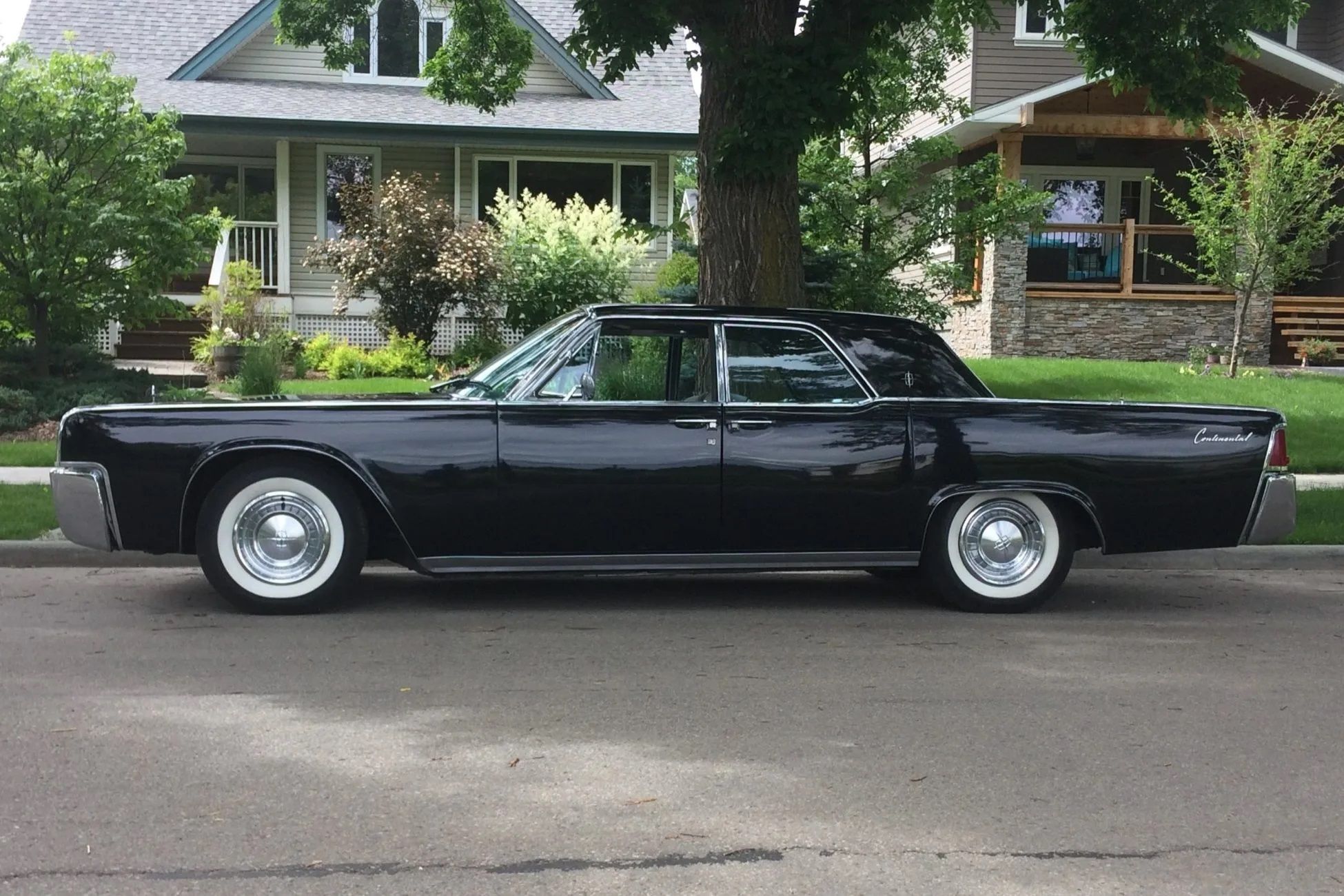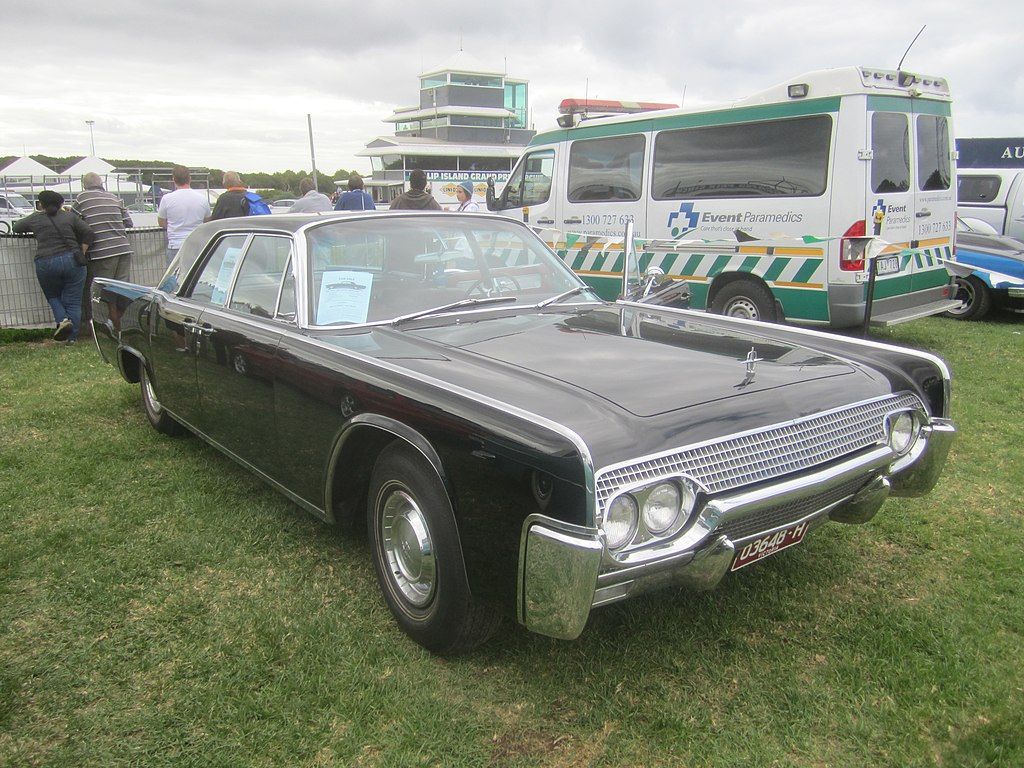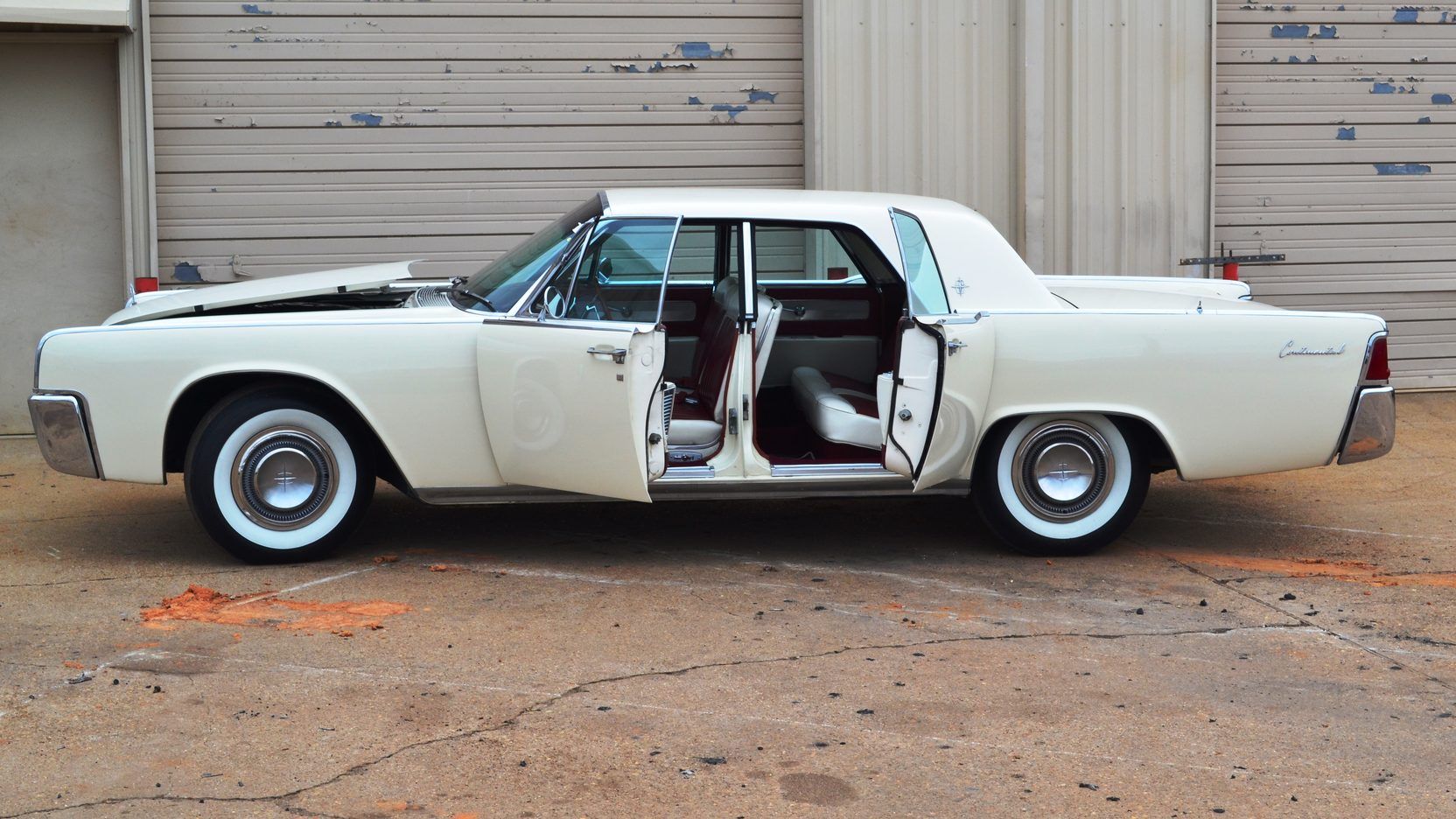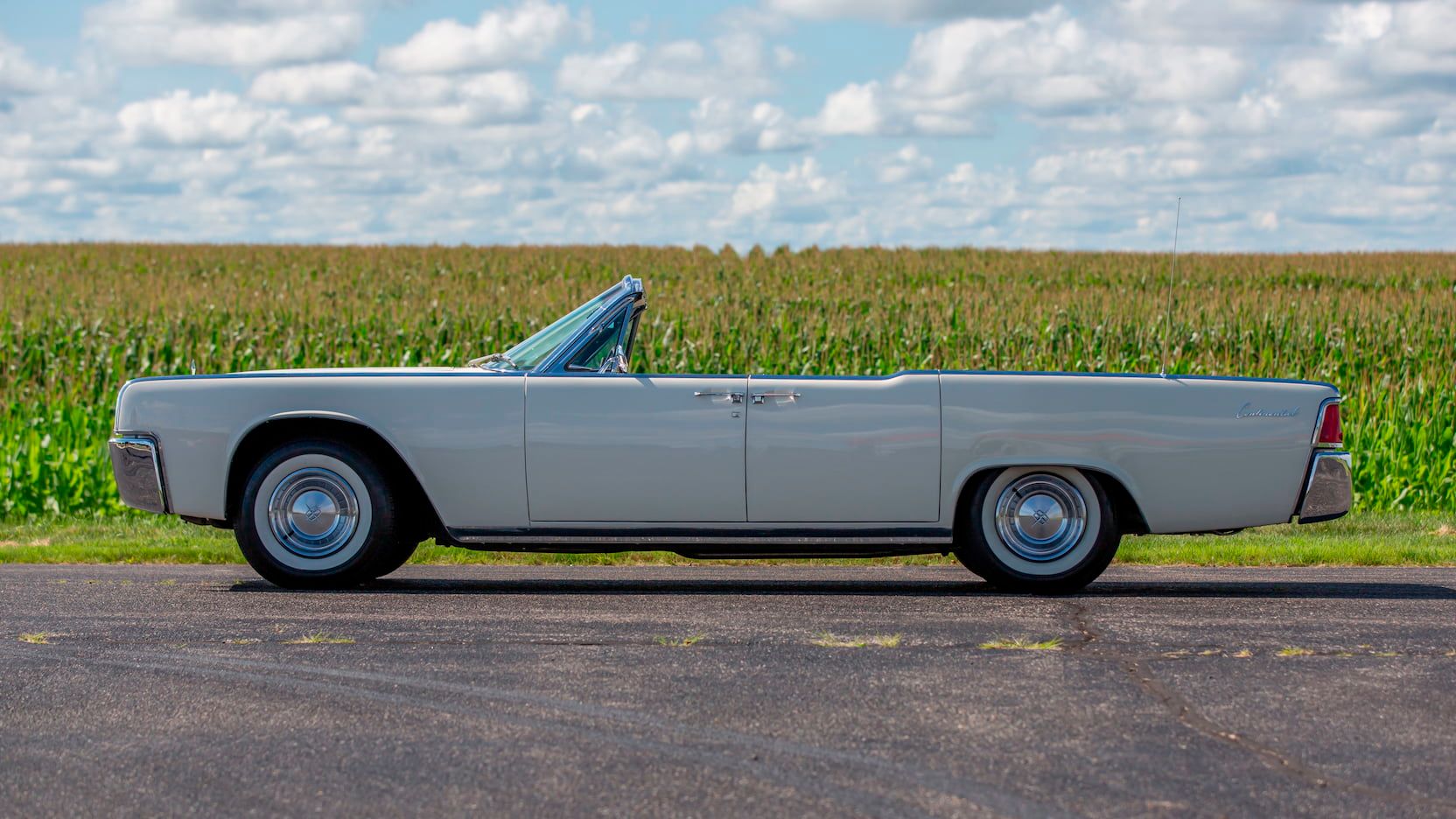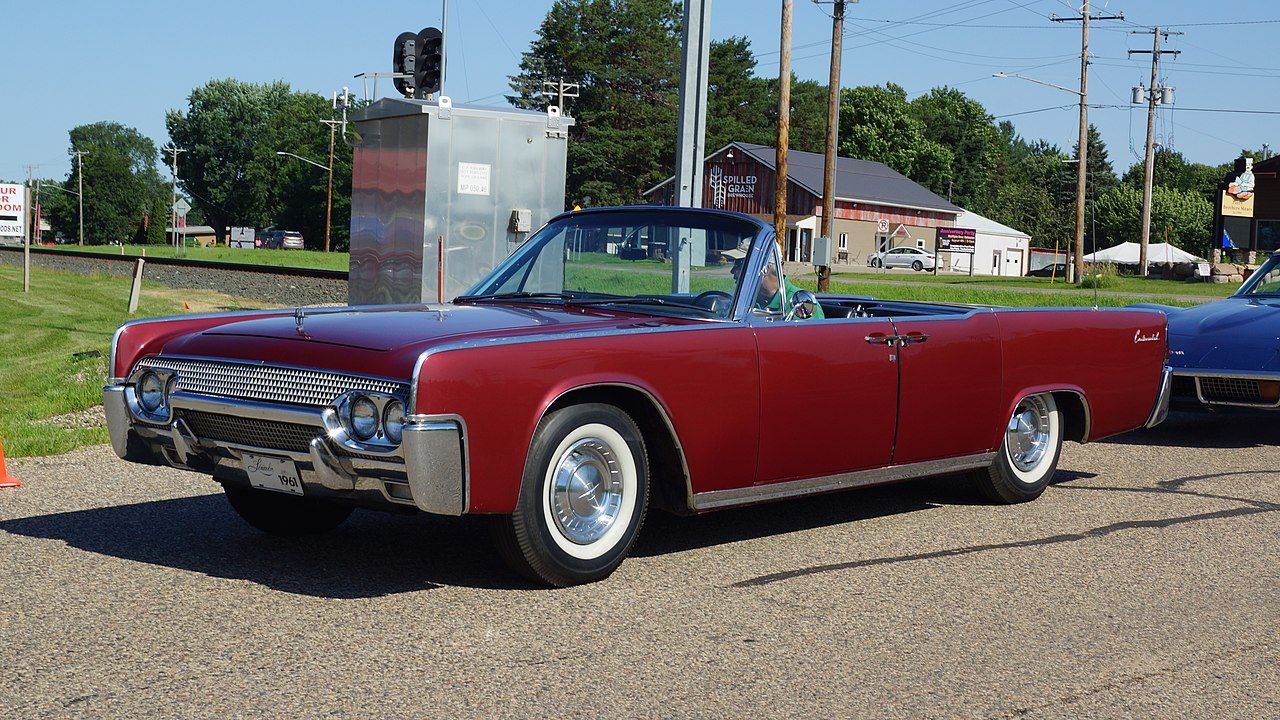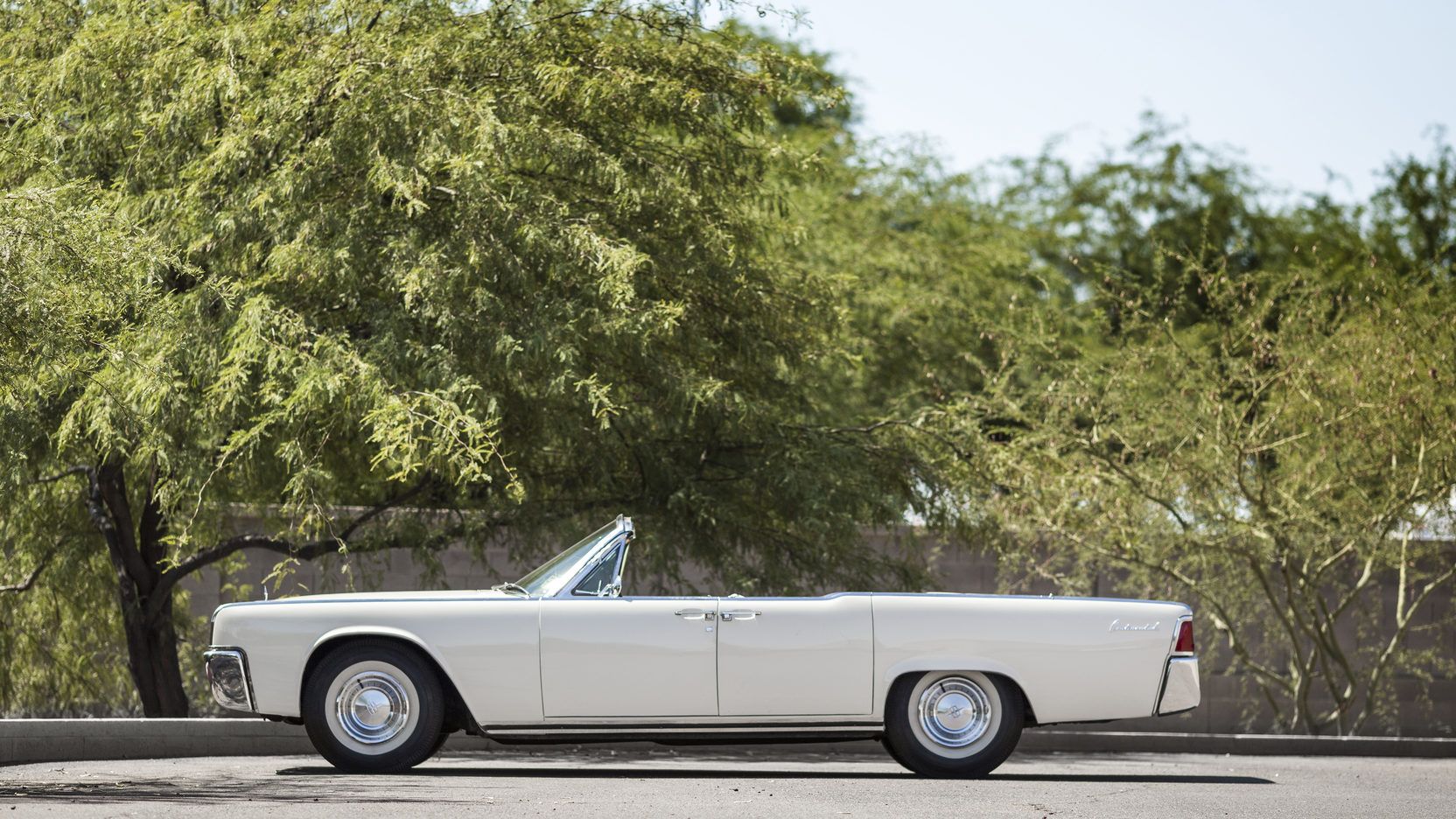Throughout the early history of Lincoln, there were numerous times when the company had to file for bankruptcy and close its doors. Design teams at Lincoln tried to develop an original idea that would boost sales and compete with the Cadillac cars on the market. In 1961 the team wanted a new type of Continental. One that would stand out above the rest in looks, style, comfort, and performance. The bizarre thing about the 1961 Lincoln Continental is that it was designed and almost became the 1961 Ford Thunderbird. Thankfully, Henry Ford II chose another design team's model for the T-Bird and told the team from Lincoln to turn their idea into the next Lincoln Continental because it was simply too good to be anything else. Let's jump behind the wheel of this great car and travel back in time to 1961 and find out why the Lincoln Continental was so great and why it is still a classic car to hold on to today.
10 The 1961 Continental Was Powered By A 7.0-liter Big Block
A car as large and heavy as the 1961 Lincoln Continental would have to have a decent-sized engine under the hood to propel it down the road. In 1960, one of the few minor complaints that the company received about the luxury car was that the engine did not have the power that it should have. In '61, the company took those issues to heart and produced the vehicle with one option, the large and in-charge 7.0-liter big block engine. This engine could push out up to 300 horses and 465 pound-feet of torque, propelling the car from 0 to 60 in under 13 seconds and reaching a top speed of 120 miles per hour.
9 Same Luxury, But More Power In 1961 Lincoln
Luxury is what the Lincoln Continental was all about. The company was doing everything that it could to compete with Cadillac. Inside, luxury was everywhere, starting with the long bench seats that could be ordered using numerous materials and colors. The dash and the doors were inlaid with California Walnut veneer, and a buzzer was added to the dashboard that went off when a door was ajar (this led to all the carmakers adding a door ajar buzzer). Even though the luxury consumers expected from Lincoln was still present, there was a change in the power that came from under the hood. The '61 produced 300 horsepower compared to the '60, which could only manage to push out around 160 bhp.
8 The '61 Lincoln V-8 Tested Before Installation
Lincoln wanted to make sure that any customer that purchased a new Continental received a good quality car that they could depend upon. The engine was one of the first things that all buyers expect to last for many years, so before it was slid into place, it went through several tests. Every engine was placed on an engine stand and run for over three hours, with technicians checking the electronic balancing and the quality of operation at varying speeds. One of the biggest plus sides of these tests is that the two-hour engine break-in process was completed before it was even installed.
7 The Continental Was Shorter In Terms Of Length For Better Handling
The bigger a car is, the harder it is to handle, and let's not even get into how hard it is to park when you have a vehicle that seems to be as long as a semi-tractor and trailer. Of course, that is a slight exaggeration, but it is hard to park something long, which is one of the reasons that the 1961 Lincoln Continental was designed and produced to be 14.7 inches shorter without taking away any of the legroom space for the occupants. Plus, the shortened stature of the car made it much easier to handle on the road.
6 The Continental Weighed More Than The Competition To Hug The Roads Better
There has probably been a time or two when the weight had to be put in the trunk, or in the bed, of a vehicle to prevent it from getting stuck in the snow or on the ice. It can be seen from these types of actions that weight can be helpful when it comes to a car. The designers at Lincoln understood this concept, especially when a rear-wheel-driven car was being discussed. Unlike many other car models on the streets, the Lincoln Continental kept most of its weight to help it stay on the roads in any weather and on any road. The Continental weighed in at 5,115 pounds, while the Cadillac was at 4,883 pounds, and the Imperial was at 4,915 pounds.
5 Every Continental Went Through A 1.5-Hour Inspection Before Delivery
Checking the engine before installation was still not enough for the people at Lincoln. They wanted to ensure that every 1961 Lincoln Continental sold was perfect, so the car received a final 1.5-hour inspection before it was allowed to be sold. The tests included a 12-mile road trip that checked 189 aspects of the vehicle. Once the road trip was completed, an in-depth test would be conducted on the electrical system and all its accessories. By the time the car was shipped out to the dealer's location, it was truly a car that could be guaranteed to be the best it could be.
4 The 1961 Lincoln Had Plenty Of Power Options
Another one of those things that buyers today have become accustomed to is power options on their new vehicles. In 1961 one of the things that luxury car buyers were looking for was power options because they were anything but standard. The windshield washer pump was power operated to ensure that the fluid hit the windshield under any weather conditions. The interior heater was power operated with dual controls, the steering was power-driven, and every Lincoln Continental had power brakes. To top it off, the 1961 Continental had power windows, so the occupants did not have to use an old-style window crank to get some fresh air.
3 The '61 Continental Was The Only American Unibody Luxury Sedan Then
In 1961 the only vehicles designed with a unibody frame were the luxury models, such as the Lincoln Continental, which was designed with comfort and luxury in mind. The point of a frame and body being welded together is to reduce the amount of movement between the two. With the correct type of suspension system, this design cuts down on the amount of road noise and feel that the occupants inside the car have to deal with. Luxury cars in the '60s were all about making a road trip more of a pleasure than a need.
2 The Continental Was The Only Four-Door Convertible In 1961
Convertibles in the early part of the '60s were generally designed with the thought that there would only be a couple of people in the front, even if they had back seats for extra passengers. The designers at Lincoln did not have the same thoughts as the rivals. Instead, it understood that people loved to ride in a convertible, regardless if they were in the front or the back. The two-door American convertibles on the market made it possible for passengers to crawl through the front doors to gain entrance to the back seats, but the Continental made it easy by offering four doors, so all passengers could get in and out with ease.
1 The Continental Was The Only American Car To Offer A Two-Year Warranty Back Then
Car and truck buyers today are accustomed to getting a decent warranty along with their purchase, but that was not the case in the early '60s. The average warranty length on an American-produced car ranged around 1 year or 12,000 miles. In 1961 Lincoln upped this amount by offering any buyer a comprehensive two-year or 24,000-mile warranty on any Continental purchased. By the mid-sixties, this amount increased once again, but in 1961 the warranty given by Lincoln was one of the best in the industry.
FAQ
Q: What engine was in the 1961 Continental?
The engine found under the hood of the 1961 Lincoln Continental was the big-block 7.0L. This engine could produce up to 300 bhp and pound out 465 foot-pounds of torque. The acceleration was not great, but considering the car's weight, 13 seconds is not too bad to reach 60 mph from a standstill.
Q: How many 1961 Lincoln Continental convertibles were produced?
The Lincoln Continental convertible in 1961 was exceptional in several ways, including the ease with which the top could be opened or closed. In total, around 2,857 Continental convertibles were built and sold in 1961.
Q: How much is a '61 Continental worth today?
To find the value of any classic car, it is necessary to go back through some of the most recent auctions because it shows the actual value at the current time. In this case, the 1961 Lincoln Continental convertible was sold by Bring a Trailer for $55,500, but some base-level sedans have sold for under $10K.
Q: Was the 1961 Lincoln Continental a performance car?
The 1961 Continental was not built to be a high-performance car, even though it had a large 7.0L big block under the hood. The Lincoln was designed and produced to be one of the best luxury models on the market that could offer good acceleration and over-the-top comfort.

